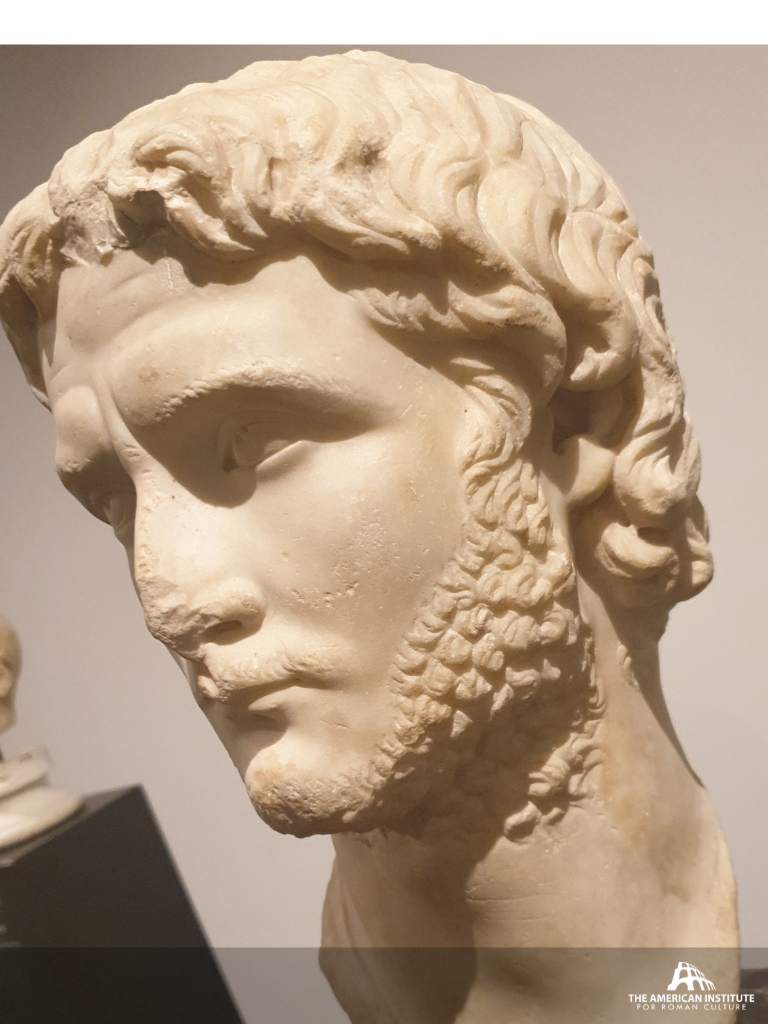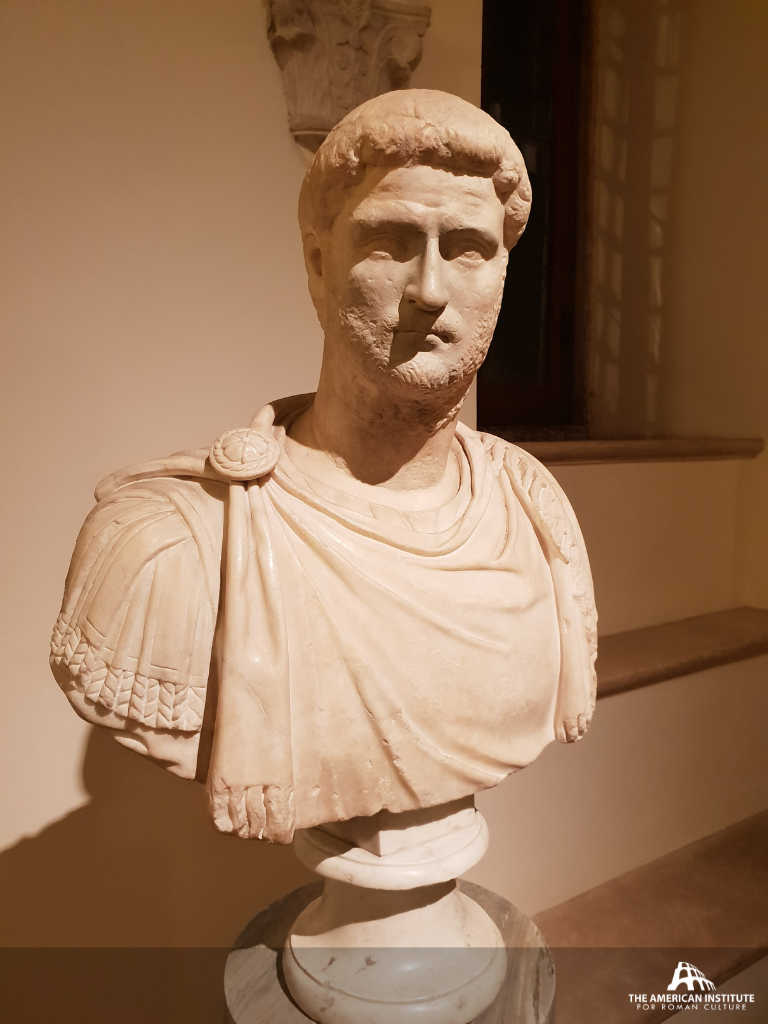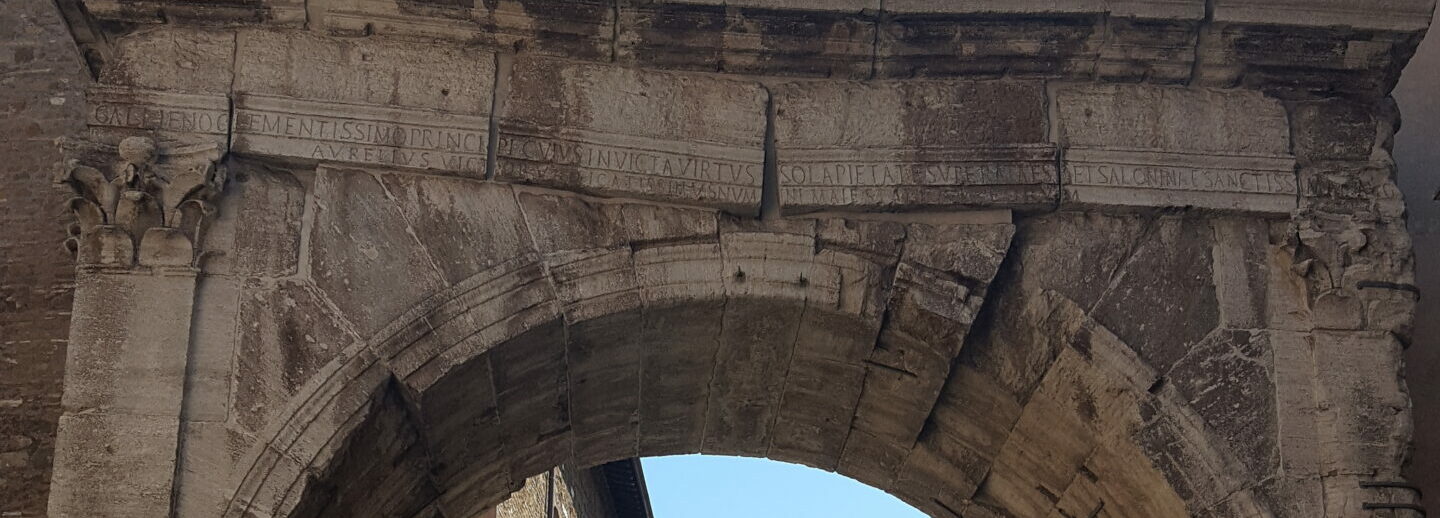Official Name: IMPERATOR CAESAR PUBLIUS LICINIUS EGNATIUS GALLIENUS AUGUSTUS
Birthdate: Circa 218 CE.
(Aurelius Victor, Epitome de Caesaribus, 33)
Birthplace: Unknown, but most likely Falerii (modern-day Civita Castellana, Italy).
(Dedication to Emperor Gallienus and his wife Salonina) (RIC V Gallienus and Salonina 1)
Reign: Gallienus was named emperor in 253 CE on the orders of his father, Valerian, and the Roman Senate. Gallienus ruled jointly with his father for a period of seven years. When Valerian was captured by the Persian army in 260 CE and taken prisoner, Gallienus became sole emperor.
(Zosimus, New History 1.30 & 1.36)
Marriages:
Cornelia Salonina
(Historia Augusta, The Two Gallieni, 21) (Dedication to Gallienus and Cornelia Salonina by Sabratha)
Children:
Valerian II (son by Cornelia Salonina)
Saloninus (son by Cornelia Salonina)
Marinianus (son by Cornelia Salonina)
(Historia Augusta, The Two Gallieni, 19)
(Aurelius Victor, Epitome de Caesaribus, 33)
Death:
Gallienus was killed by a group of rebellious soldiers in 268 CE near Mediolanum (modern-day Milan, Italy).
(Zosimus, New History 1.40-41)

Head of Gallienus, Palatine Museum, Rome, April 2019.

Bust of Gallienus, Musei Capitolini, Rome, November 2018.

Bust of Gallienus, Palazzo Altemps, Rome, December 2018.
260
(Zosimus, New History, 1.30 & 1.36)
260
(Eusebius, Ecclesiastical History, 7.13)
268
(Zosimus, New History 1.30-31 & 1.37)
268
(Historia Augusta, Lives of the Thirty Pretenders, 9-10, 22) (Zosimus, New History 1.38 & 1.40)
268
(Cedrenus, A Concise History of the World, 1.454) (Zosimus, New History 1.40)
This content is brought to you by The American Institute for Roman Culture, a 501(C)3 US Non-Profit Organization.
Please support our mission to aid learning and understanding of ancient Rome through free-to-access content by donating today.
Cite This Page
Cite this page as: Darius Arya, The American Institute for Roman Culture, “Gallienus,” Ancient Rome Live. Last modified 09/16/2023. https://ancientromelive.org/gallienus/
License
Created by The American Institute of Roman Culture, published on 09/16/2023 under the following license: Creative Commons: Attribution-NonCommercial-ShareAlike. This license lets others remix, tweak, and build upon this content non-commercially, as long as they credit the author and license their new creations under the identical terms. Please note that content linked from this page may have different licensing terms.


